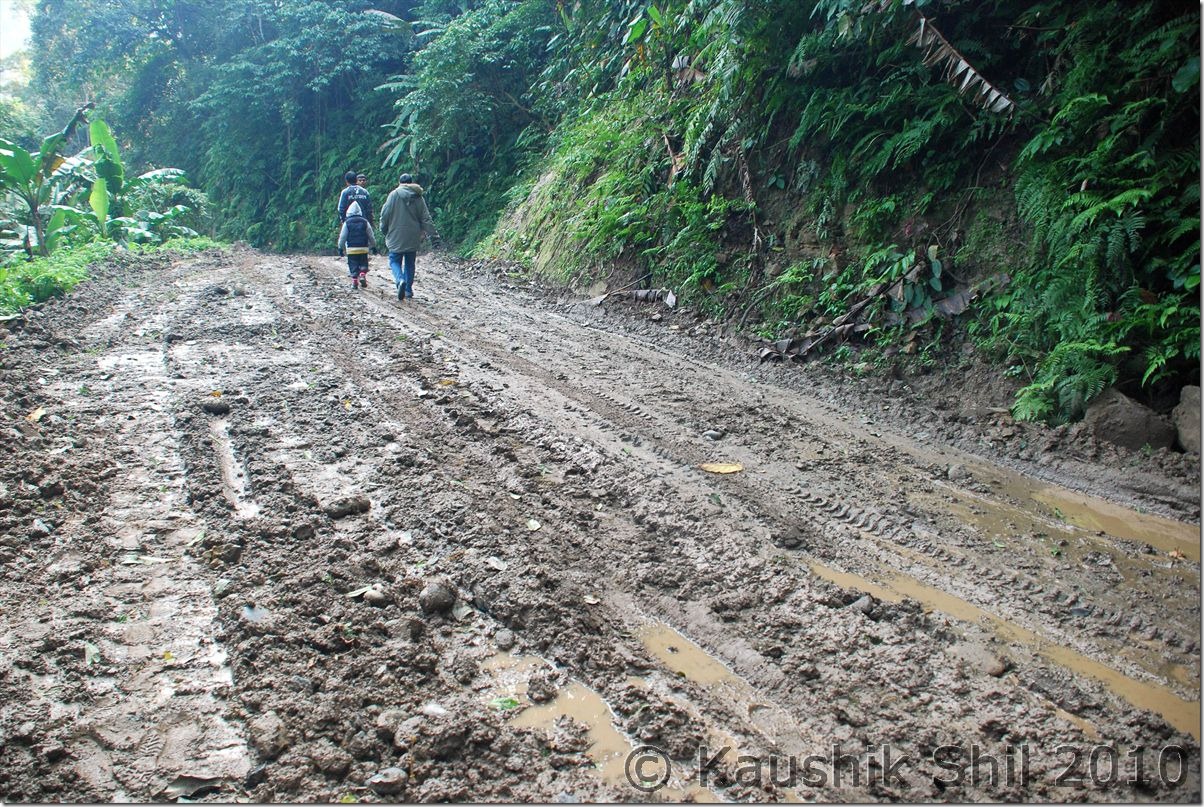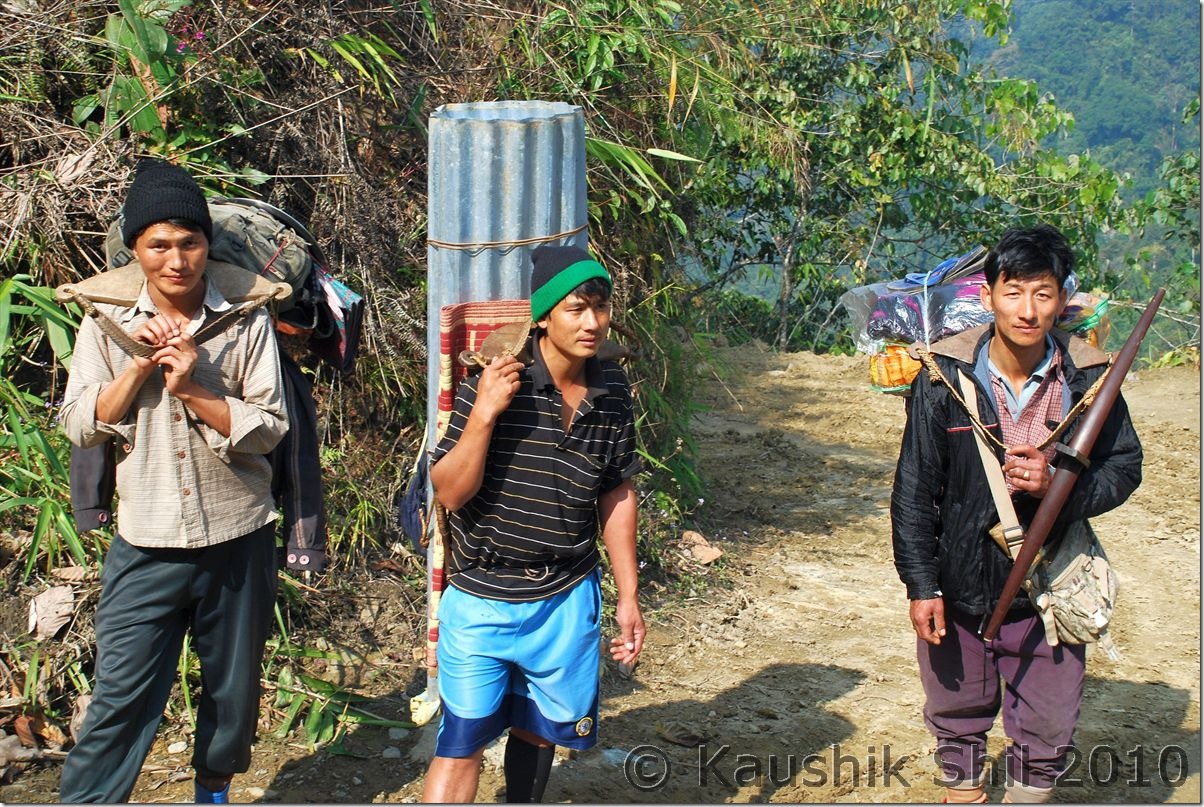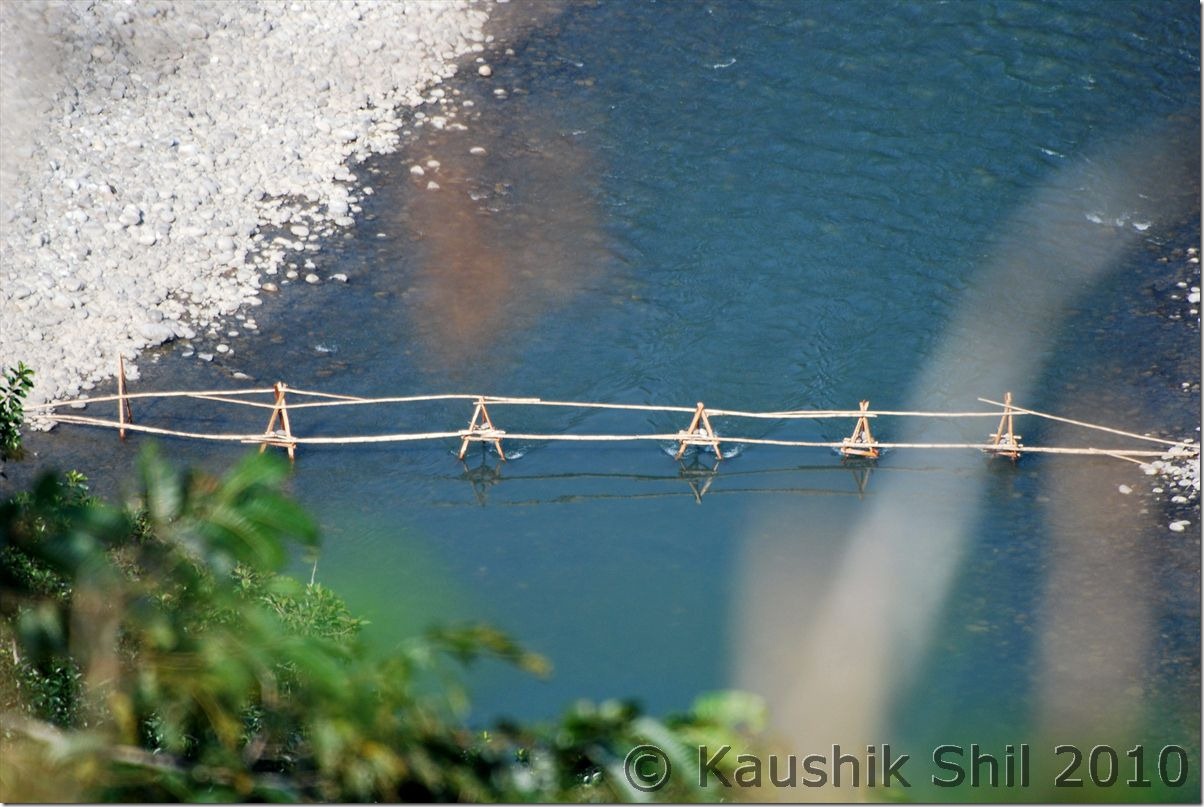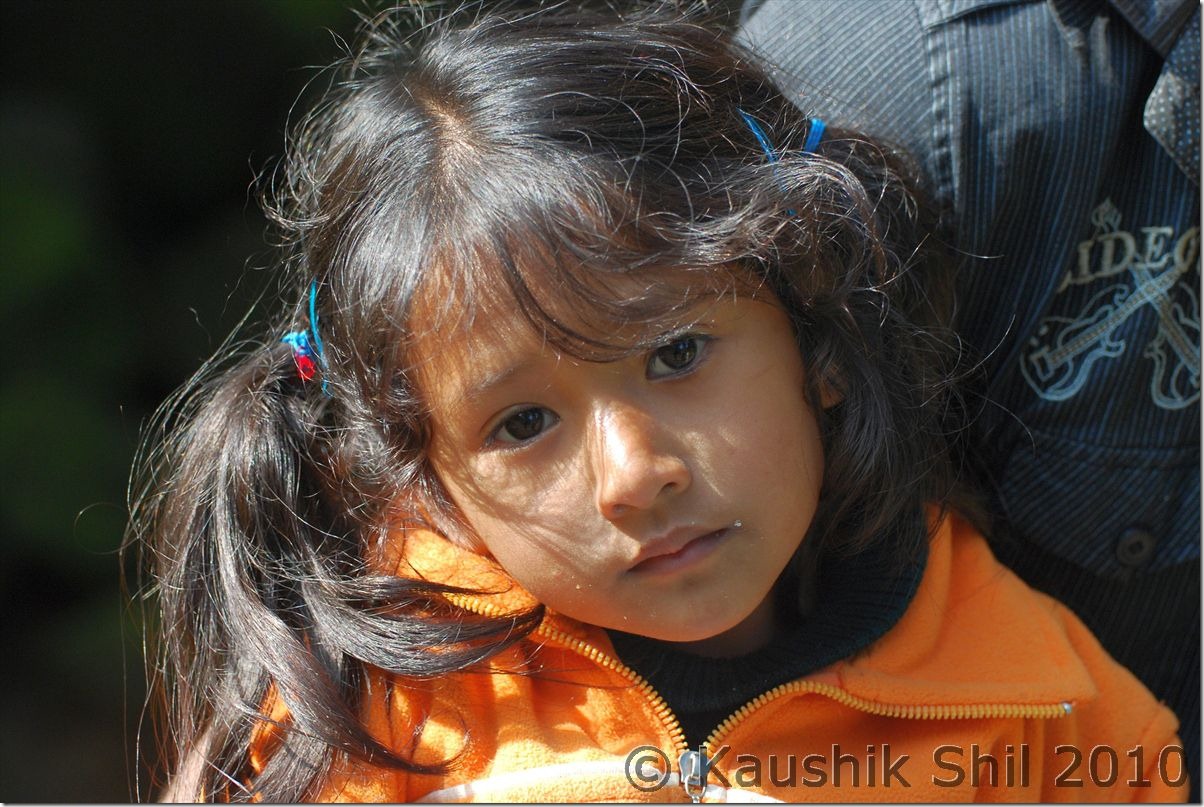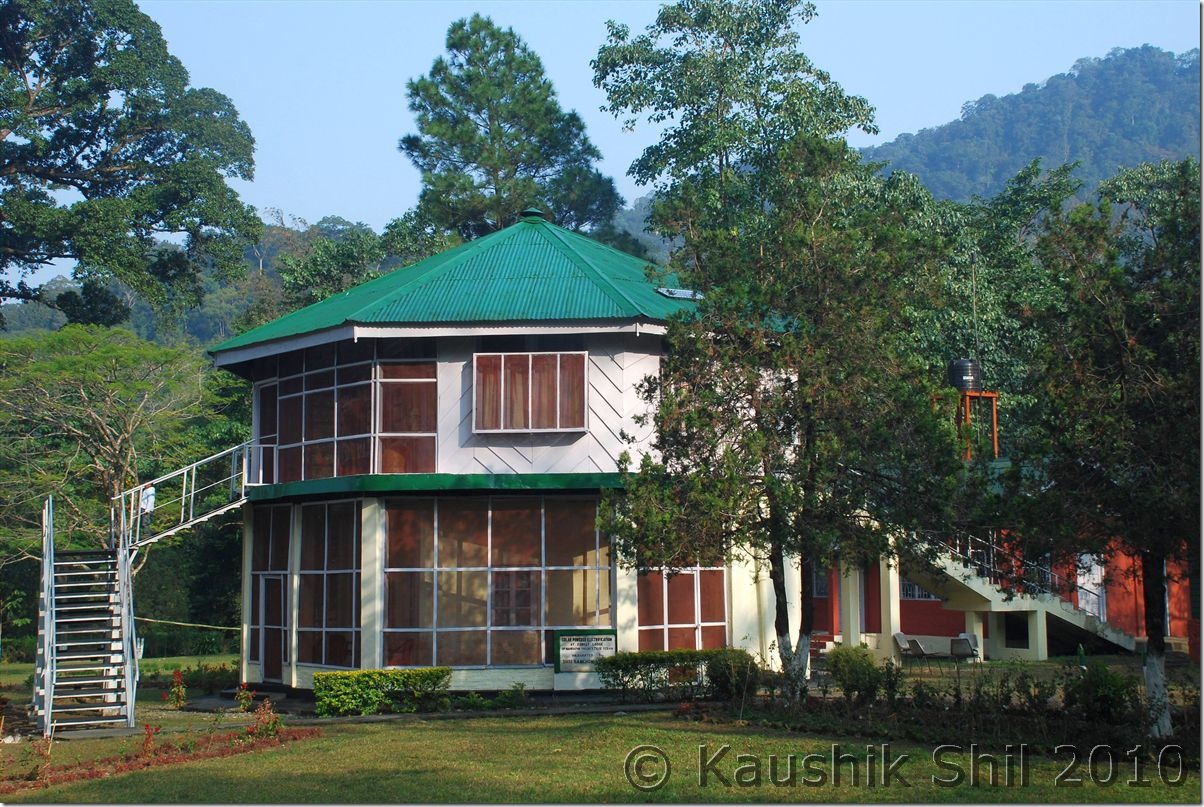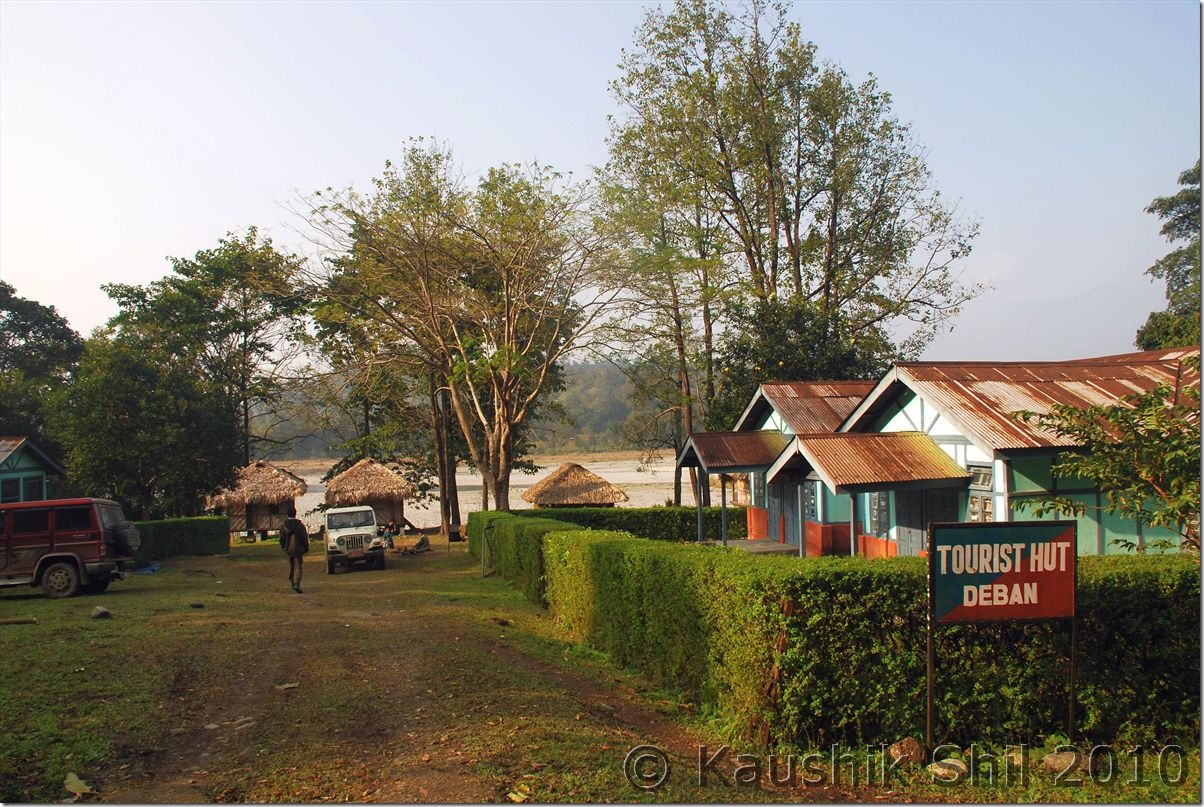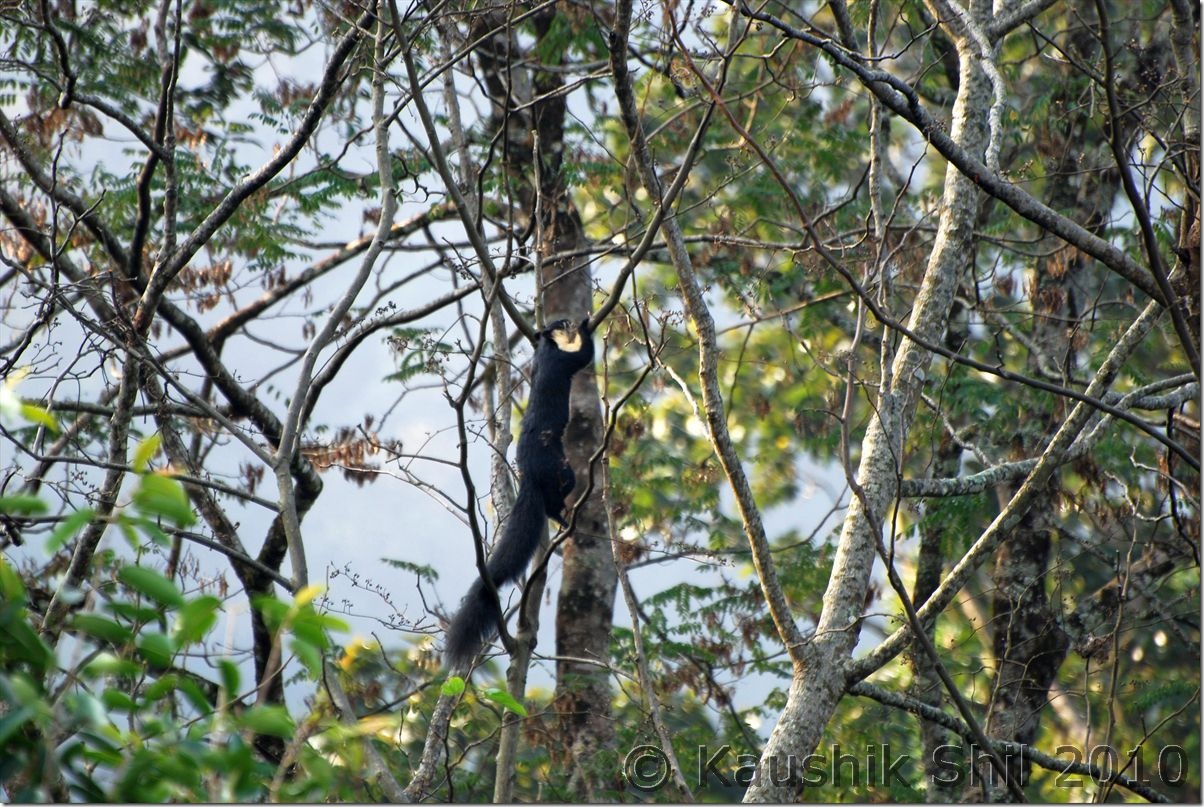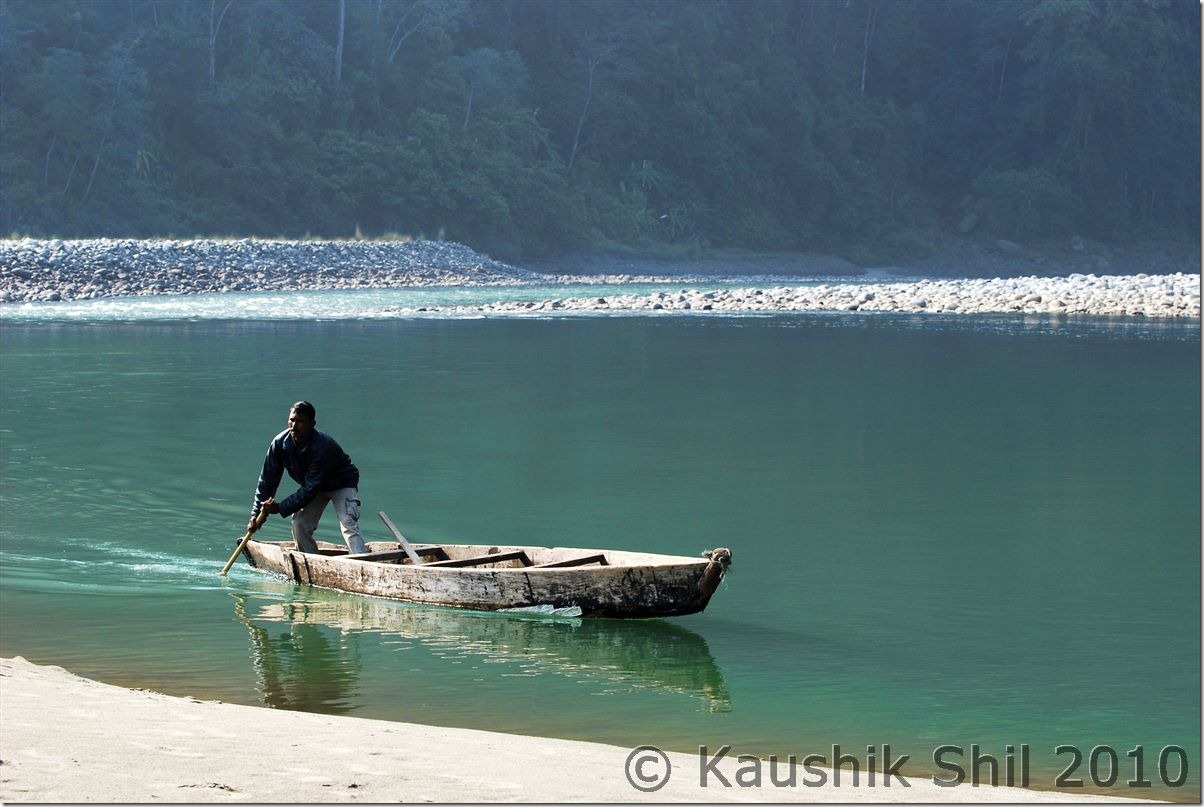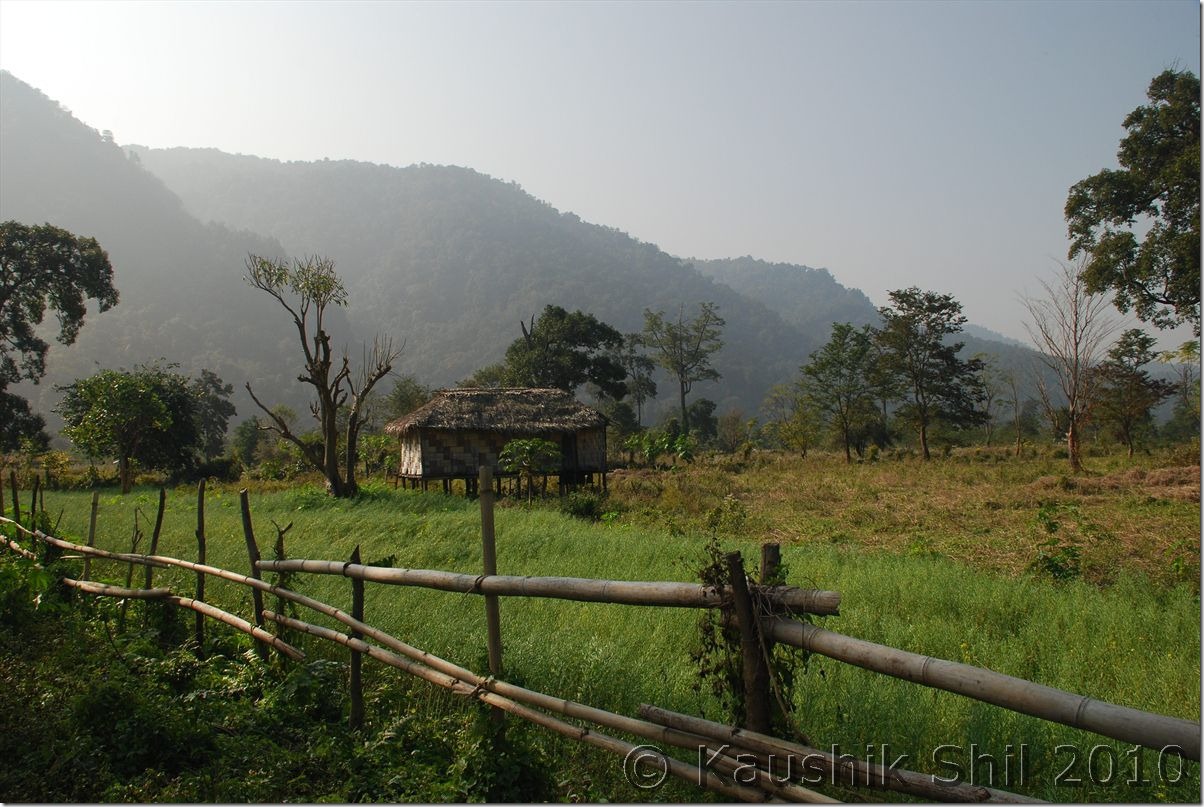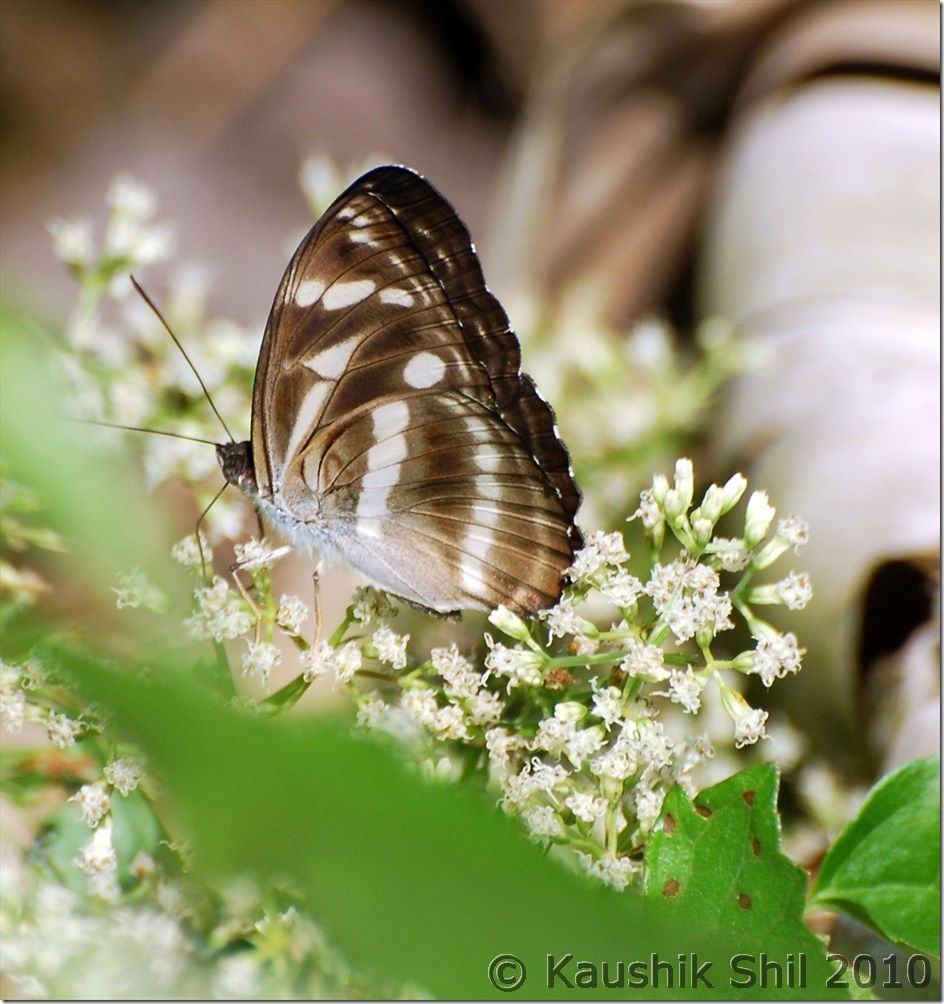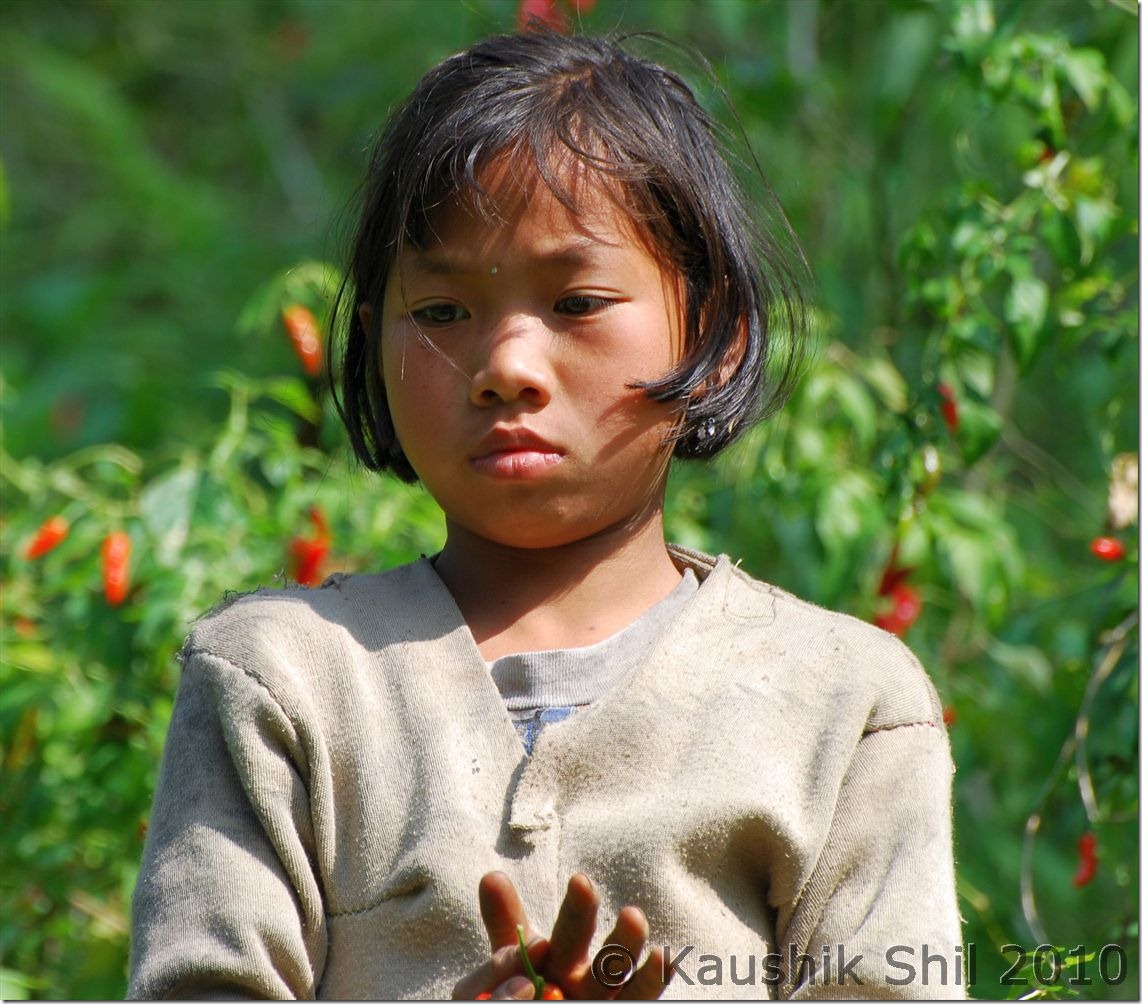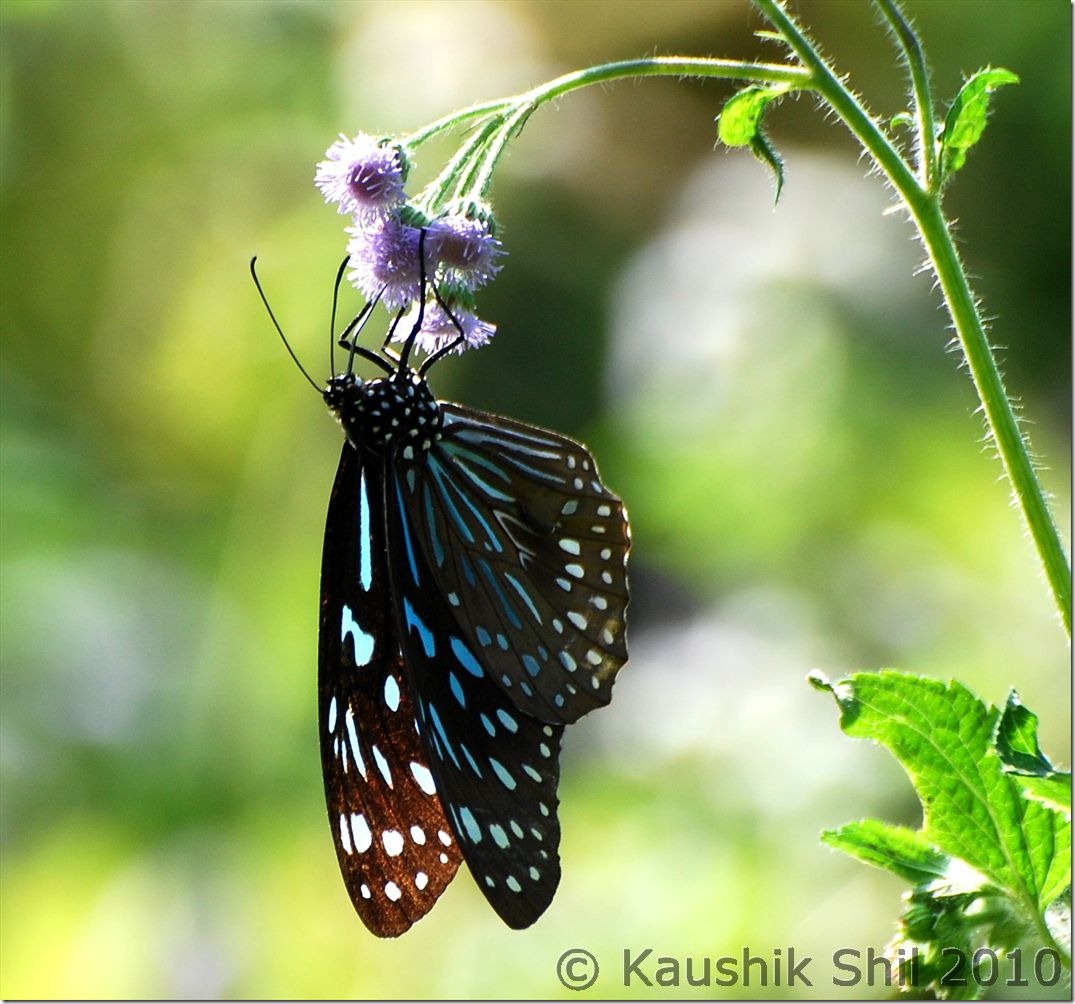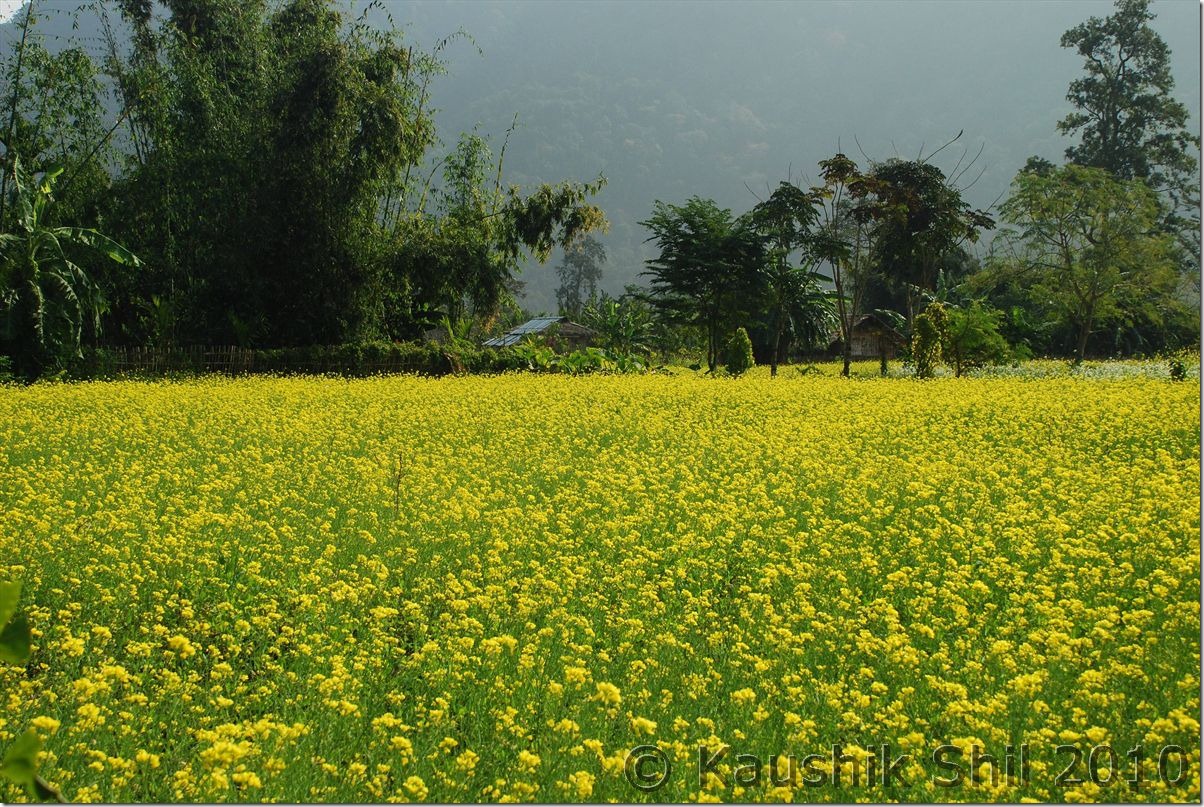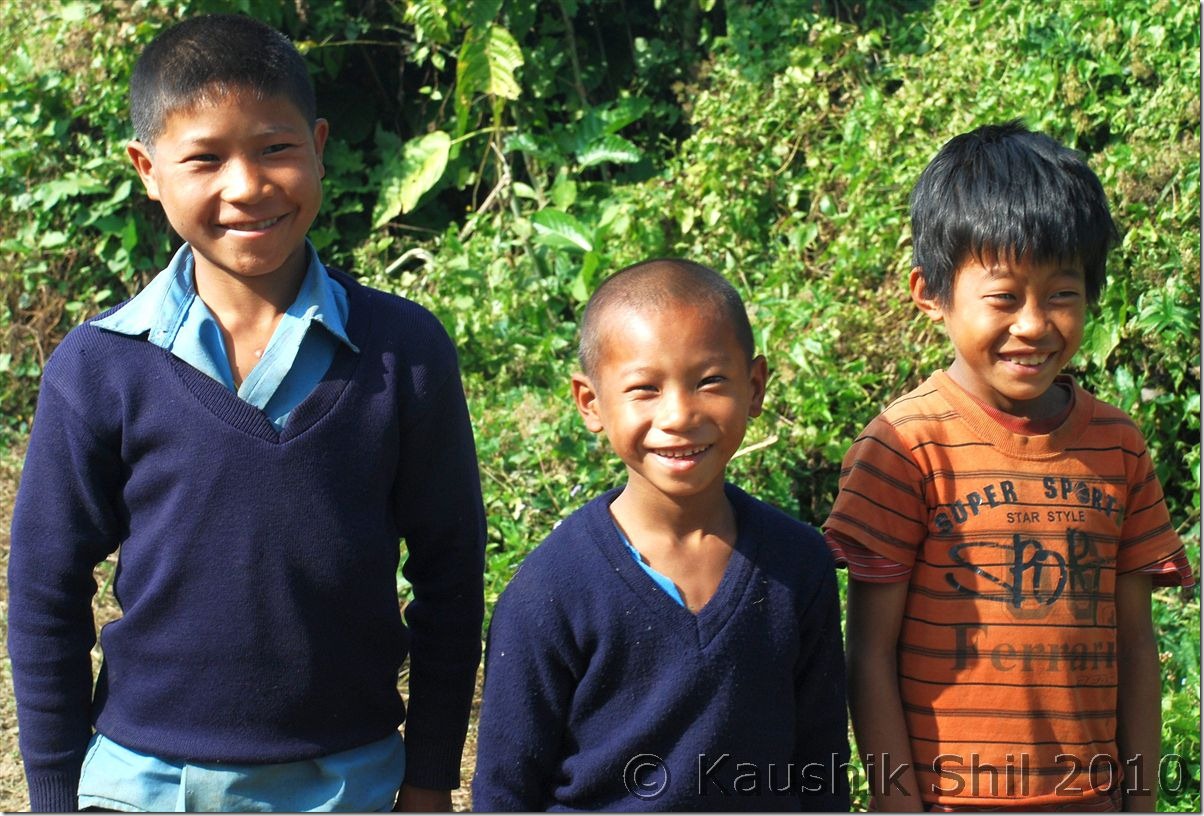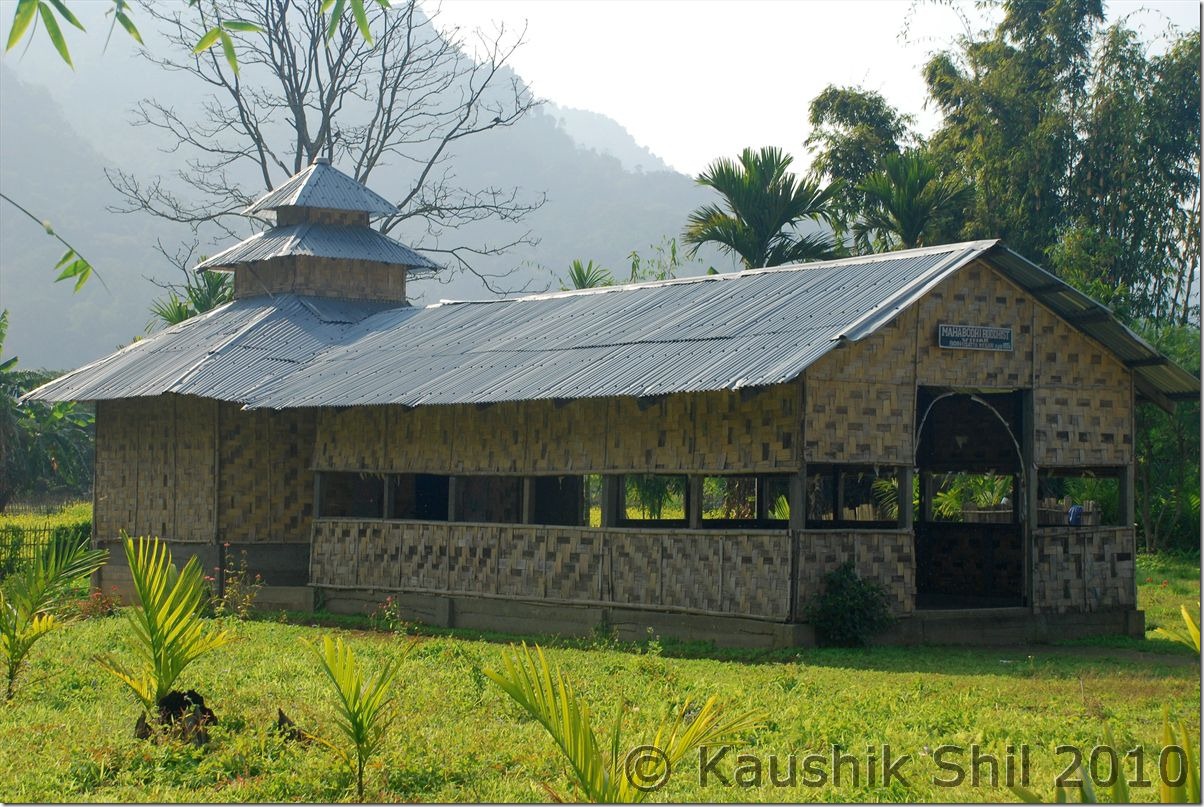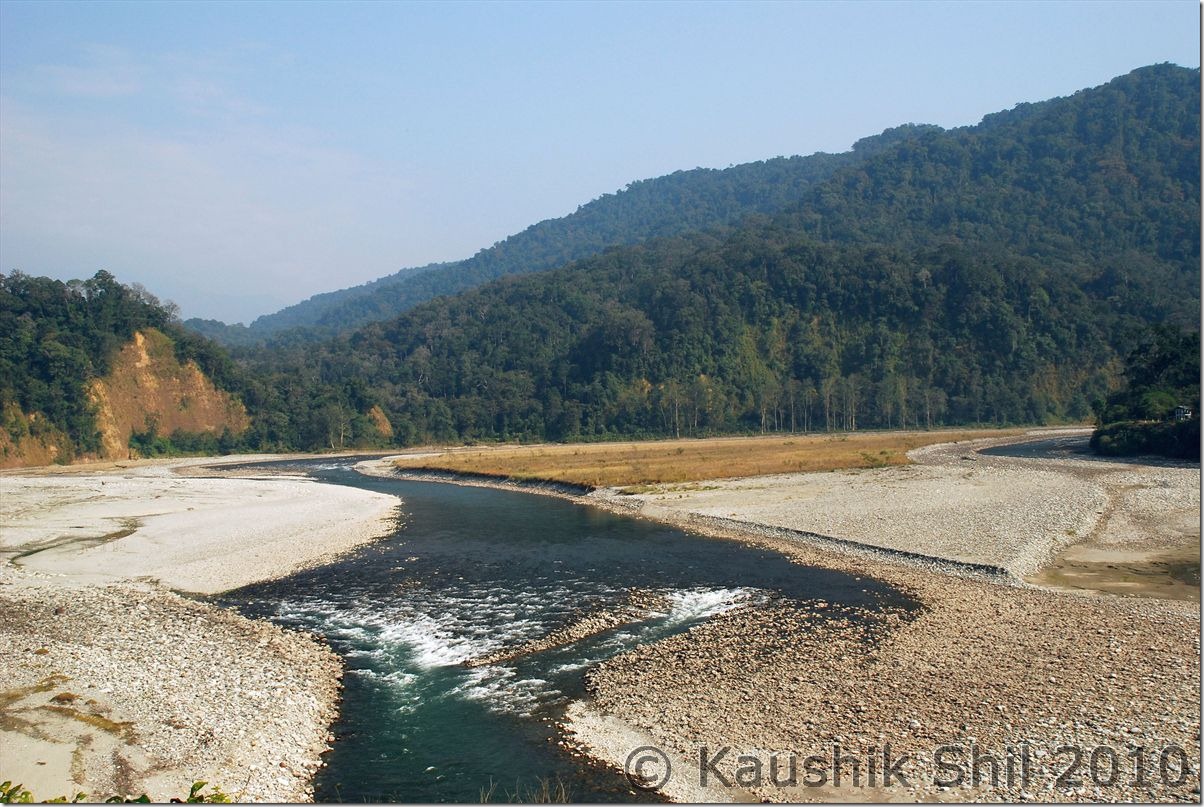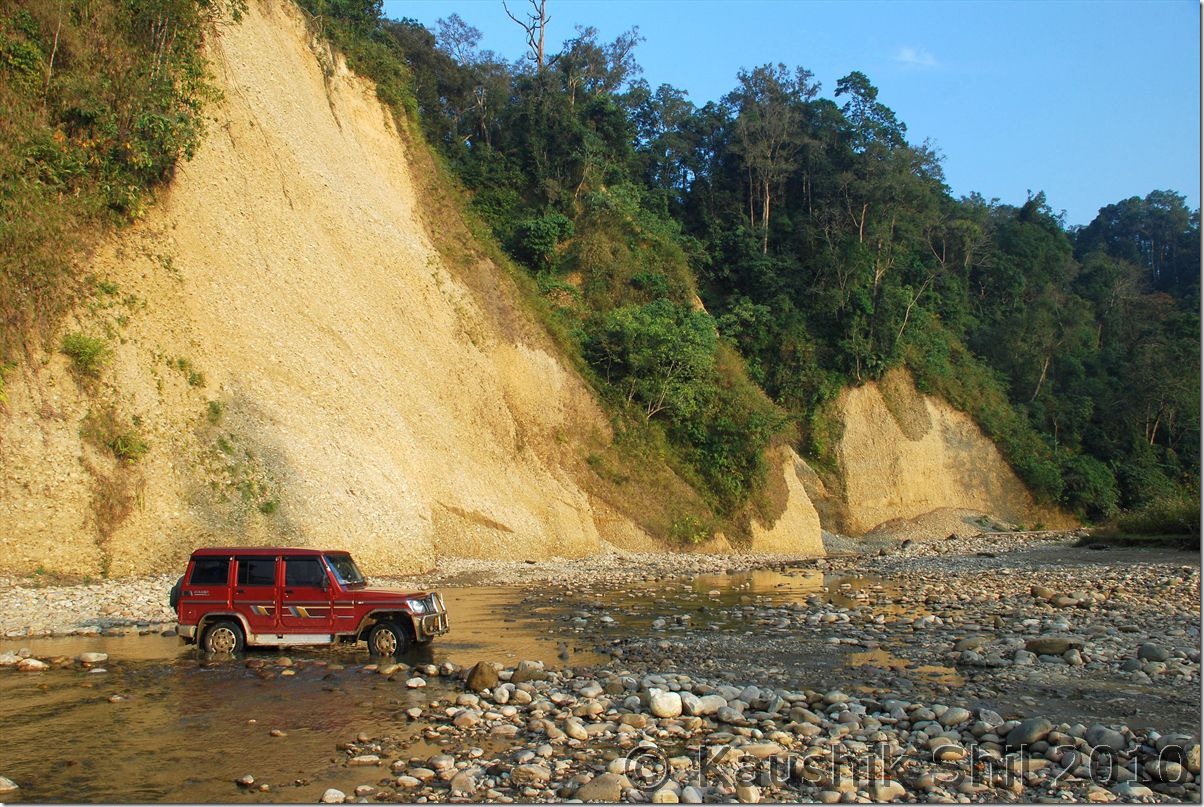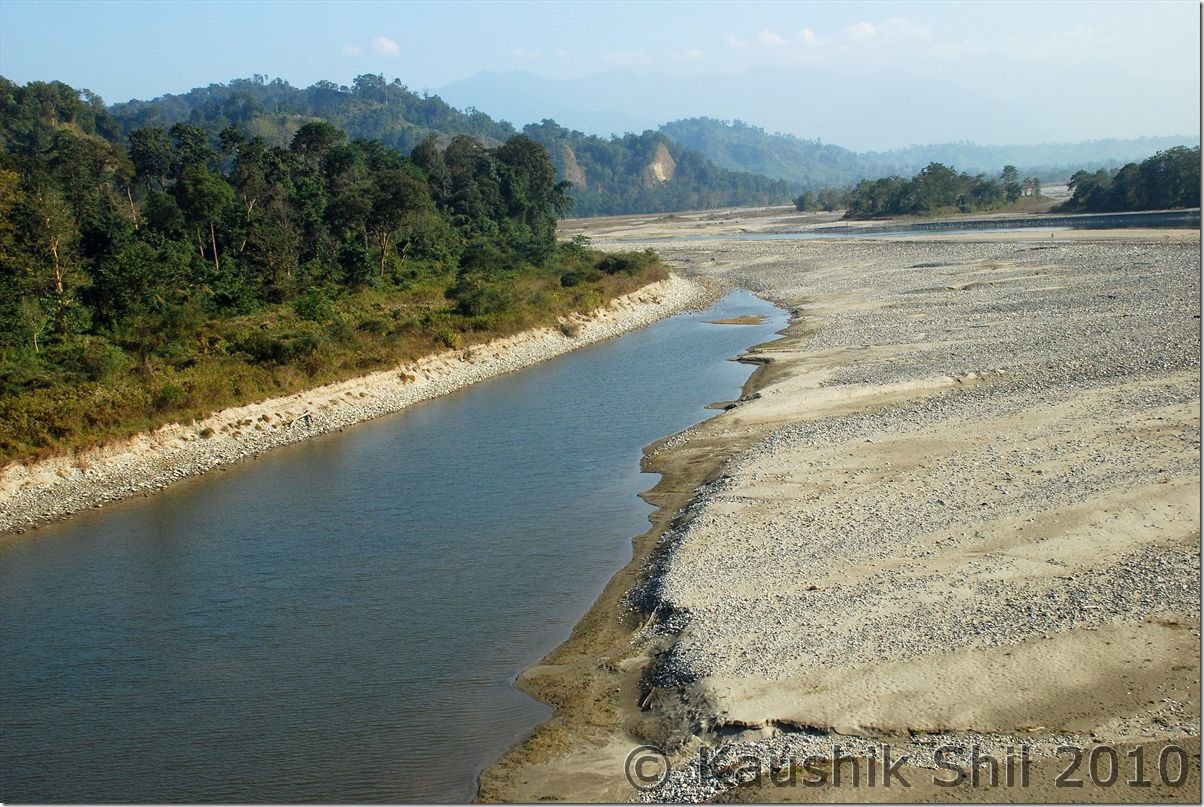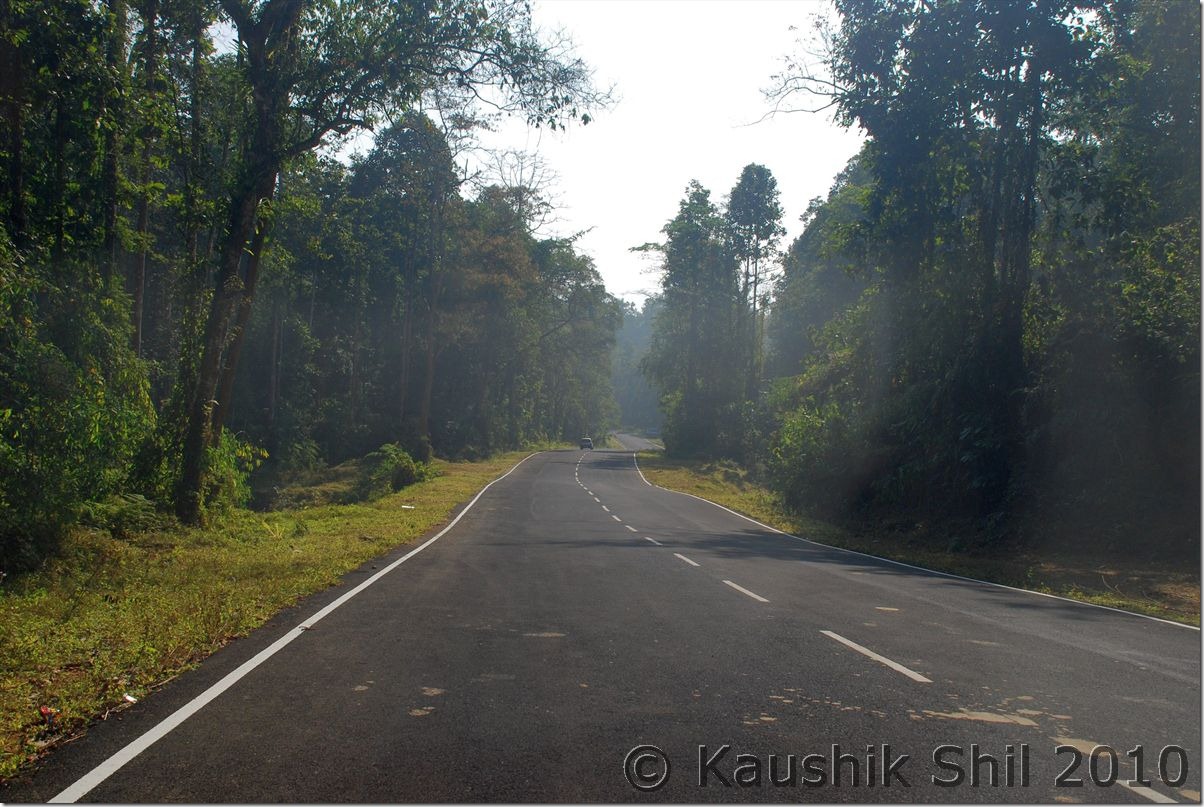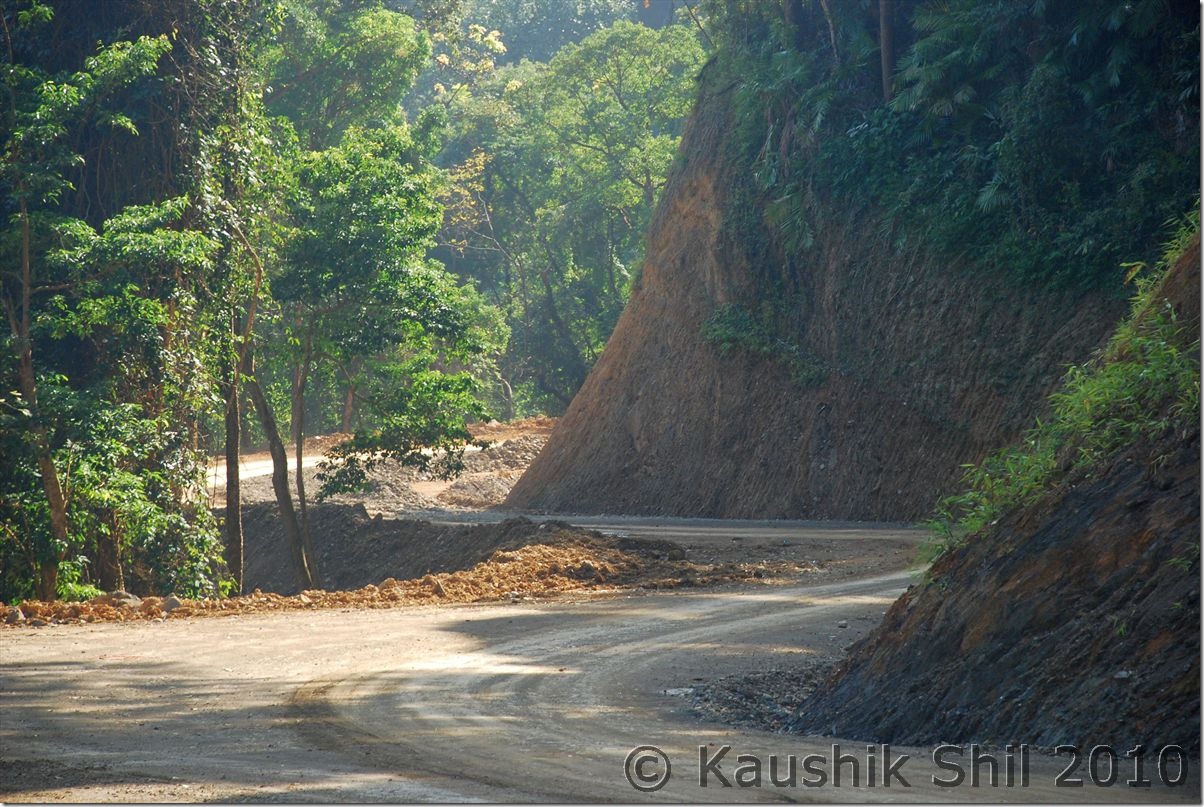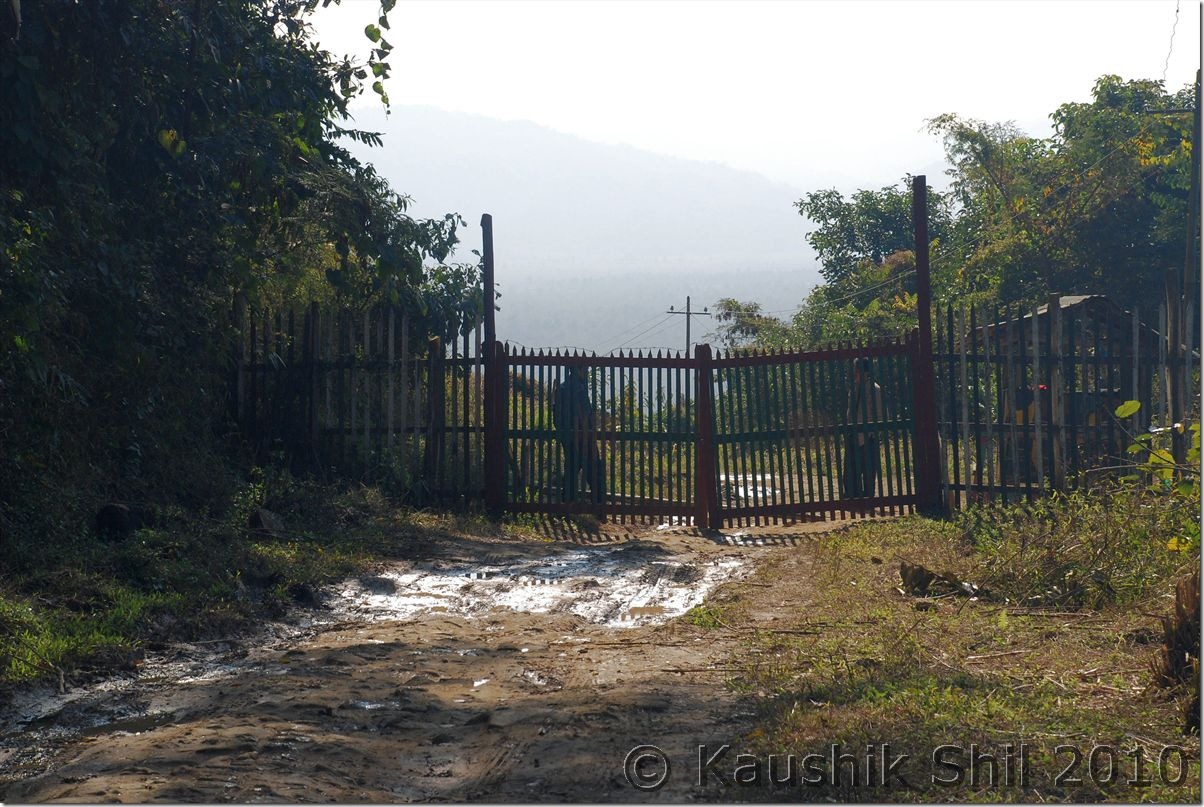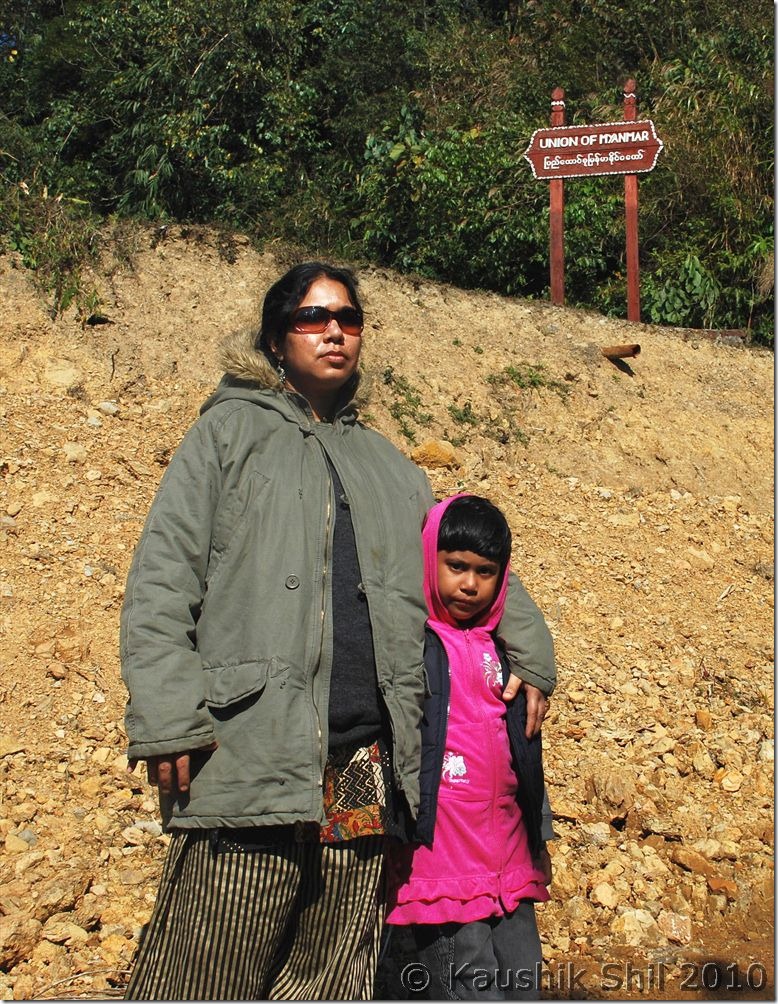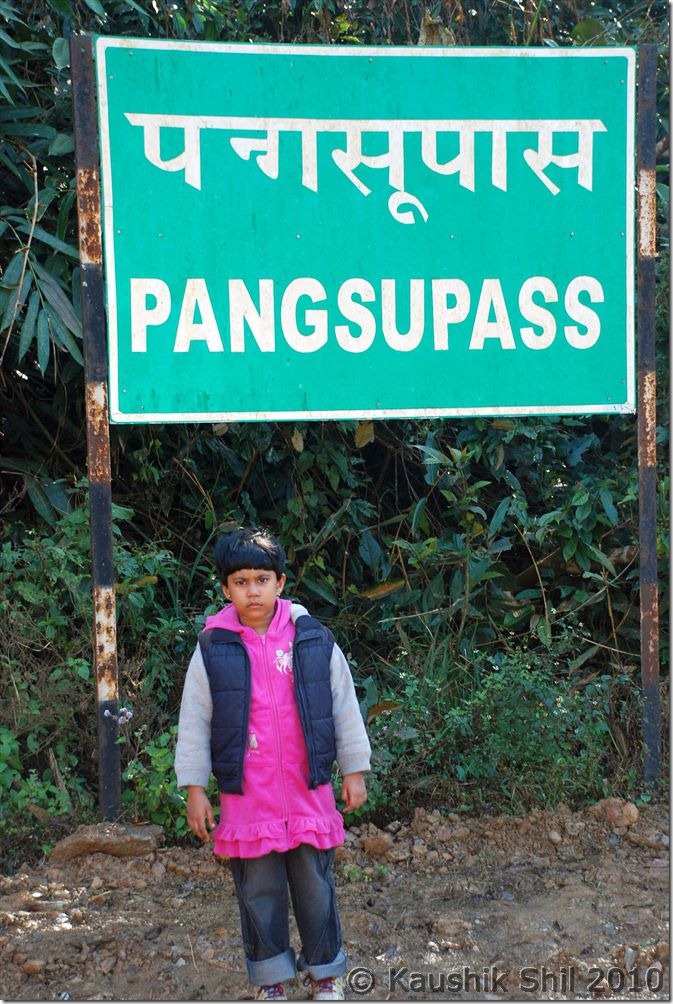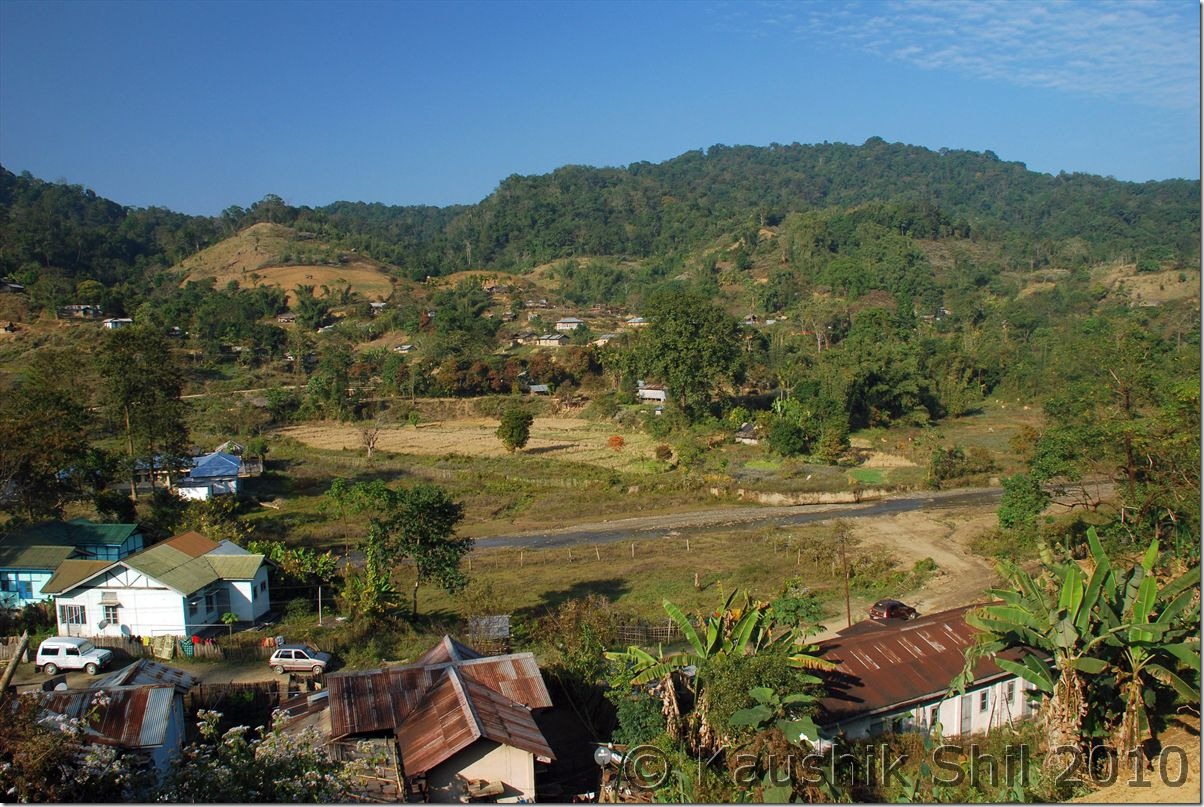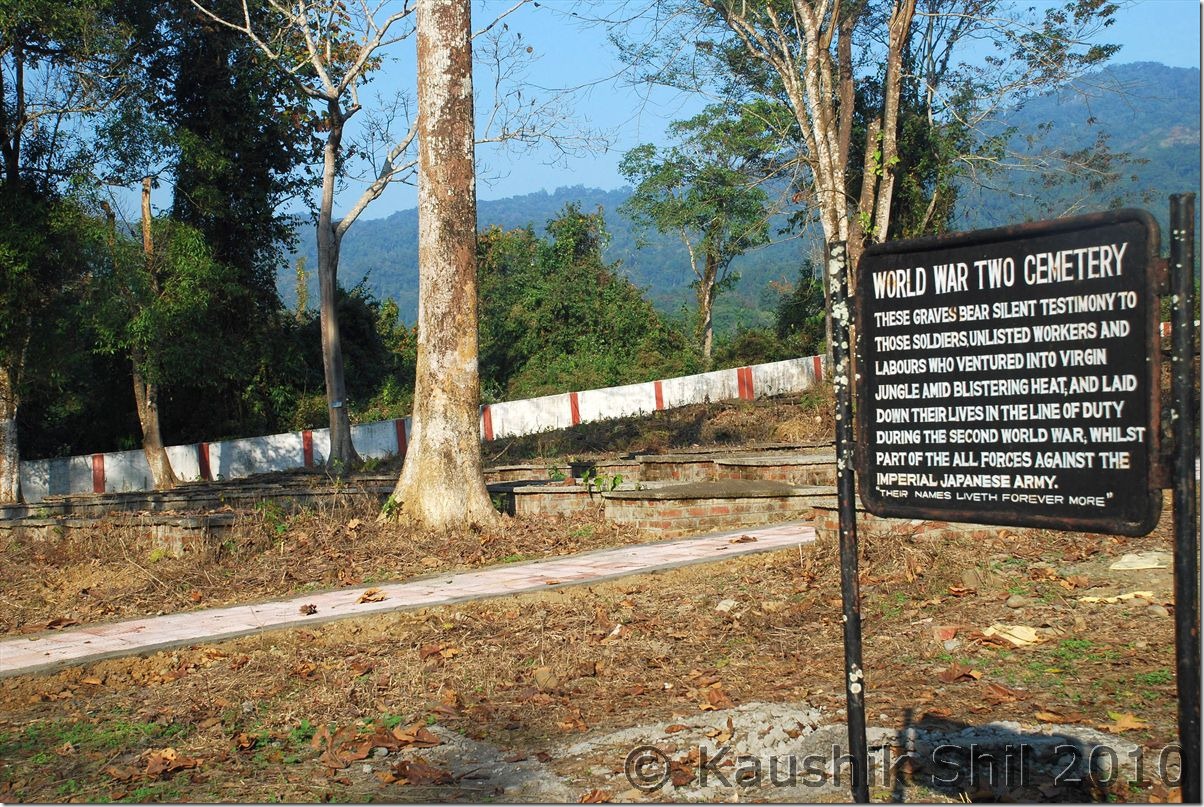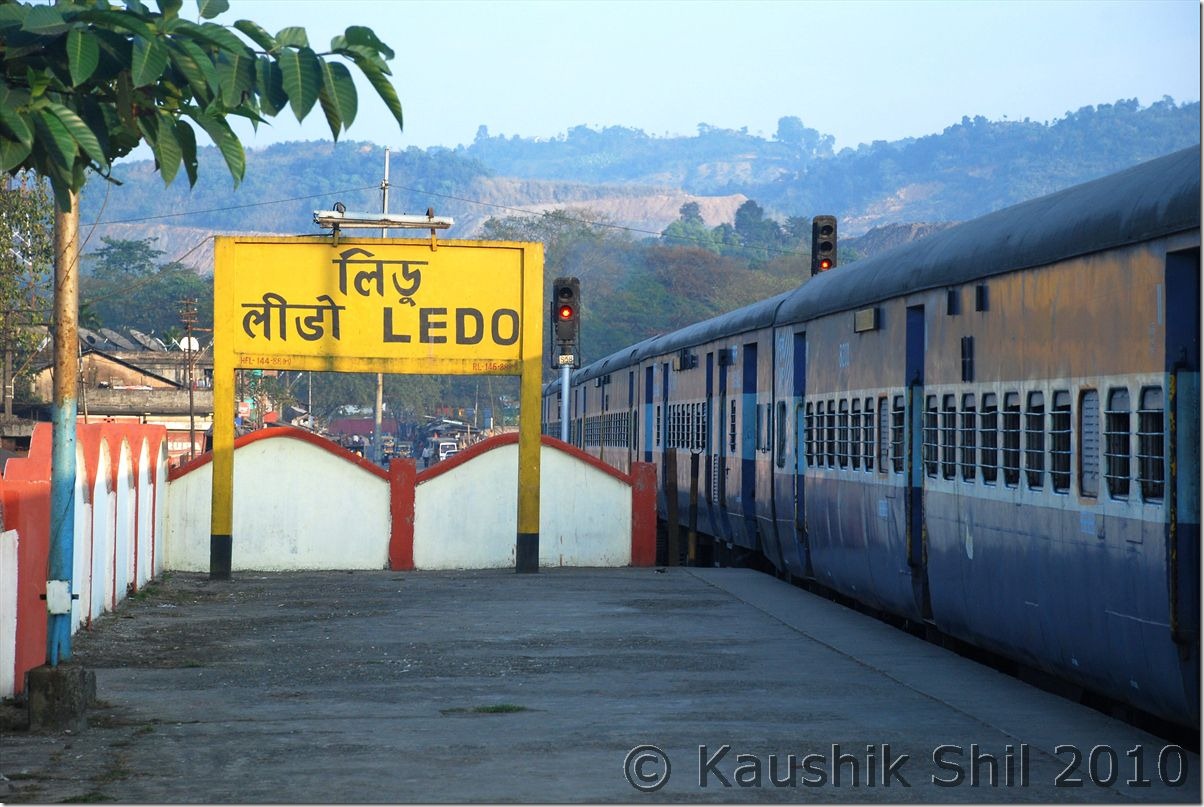3rd January:
Brilliant day with a great sun shine started, we planned to walk to 20th Mile through MV Road (Deban is in 17th Mile). The 3 miles walk took almost 2 hours as the road was not even walkable. But it was a nice experience walking through that road and seen Lizu tribes of Vijaynagar (Undoubtedly one of the remotest corners of India) are walking through the roads after buying their rations from Miao. They said the walk is of 14 days if they follow the road, they usually take shortcuts by crossing NoaDihing River that flows through Namdapha and climbing mountain but still that takes 6 days of walking. They build makeshift camps in the forest to spend night and again start walking in the morning. Surprising to even think how many faces India really is having. I found even a 4 year old kid is walking with them and would walk up to Vijaynagar. From 20th Mile you can get good views of Daphabum, the highest peak in Namdapha in a clear day. Evening was spent with the Forest dept people there making a camp fire and watching stars and listening to the flows of the river below. Wonderful experience and I have never experienced so much remoteness in any forest in my life.
On MV Road Trekking to 20th Mile:
Lizu tribes take their daily commodities from Miao:
Bridge made by Lizu on Noa Dihing:
Lizu girl of 4 years, she too walks for 8 days through dense rain forest:
Deban Forest Rest House:
Tourist Hut in Deban:
4th January:
We initially planned to trek into the forest up to Haldibari but then forest people advised us not to go with a kid of 5 years as this year because of heavy monsoon, we had to cross 2 water streams to reach there and both are having knee deep water for an adult and having difficult turbulence and slippery rocks below. Also leach guard is mandatory to go there and getting a leach guard of kid’s size is impossible. So we decided to cross Noa Dihing and visit the Chakma Village on other side of the river and also considering next day’s plan we decided to leave in the afternoon rather than staying that night at Deban. Chakma Village is very nice and clean, had thatched house fitted with Direct To Home connection, a nice fusion of tradition and contemporary. They do farming for their livelihood. Around 2.00pm in afternoon after having lunch, we started our return journey to Miao and this time with ample daylight and much drier road after 2 days of bright sun, the MV Road didn’t seem to be as bad as we experienced when coming. Still the car could get stuck anytime and we found a Scorpio stuck in between and we all helped to get it out of the mud. Reached Miao in evening and stayed in Eco Tourist Lodge in Miao, another Forest IB, presently run by a NGO. The accommodation was nice and clean, food was not that good though.
Himalayan Giant Squirrel:
Boatman of Forest Department:
Chakma Village on other side of Noa Dihing:
Butterfly:
Chakma Girl plucking Red Chilies:
Butterfly:
Picturesque Chakma Village:
Chakma Boys:
Pagoda style Buddha Bihar in Chakma Village:
Noa Dihing flows through Namdapha National Park:
Driving through the River, that’s how drive in Arunachal means:
5th January:
We started early and gone to experience the Ropeway in Miao, that’s being used by local to cross Noa Dihing. This was one of the oldest ropeways built in 1975, developed and still maintained by Oil India Limited. Those who visit Miao must experience this as the view from the ropeway is awesome. It starts at 9.00am and runs till 4.00pm. We reached around 8.00am and requested them to give us a ride; the person was kind enough to start it at 8.30am on our request. One way crossing takes 7 mins and after having a good 15mins ride, we started our onward journey towards historic Stilwell Road. From Jagun we diverted left towards Jairampur. Jairampur is having the check gate to enter ILP. Soon after we faced first army check post where we have to show the special permit to visit the Pangsau Pass as given by ADC, Jairampur before they let us go. We visited on the way the second world war Cemetery towards Nampong (Nampong to Jairampur is 17 km and Jairampur to Jagun is 10km). Nampong is last Indian village on this road towards Burma where Burmese people come to shop on 2 specific days of month (15th and 30th). After crossing Nampong again we were stopped by army in another check post. Here even after showing the permit, they spoken to their higher authority and after 15mins we got the go ahead and we were told that on the way army would escort us to border to show us the border stones and then would escort us back again. We faced one land slide in between, waited for 30mins to get it cleared by BRO and then suddenly we saw the much sought after mile stone written as Pangsu Pass, we noticed on other side another stone showing “Union of Myanmar” but still couldn’t believe we reached the border. The roads suddenly got deteriorated but we kept continued and after 2 km we understood the mistake when faced by Burmese Police. We realized we crossed the international border with a car without any valid papers, it could be much worse, fortunately the Burmese Police were kind enough, we even clicked a few snaps with them, they didn’t understand any language we are aware of and then when we are coming back, we encountered Indian Army, the post we didn’t notice at all while going. They asked why we went alone without army escort and also enquired exactly how far we gone, we realized any silly answer would make our condition worse, we started showing some place pointing our fingers and saying “Till there” and we apologized for going there without taking army escort but it was really not intentional, though proved good for us finally for a 2km to and fro drive in Burma that was impossible if Army would have escorted us. By the time we were returning it was communicated all through Indian Posts that a red colored Bolero gone towards border unescorted and everywhere we had to explain the same thing repeatedly. We were back to Jagun by 2.30pm much relieved after experiencing the Stilwell Road and the much sought after Pangsu Pass. It was really amazing to even think how this 1736km road was built in flat two years negotiating such a hostile terrain of mountains and dense rain forests cutting across 3 countries from Ledo in Assam Plane to Kunming in China through Myanmar. After Jairampur road was superb and we drove fast till Digboi, in between touching Ledo station, the easternmost operational railway station of India. Digboi was famous for many first especially considering the fact; it was the place where crude oil was discovered in 1889, first in the eastern part of Suez Canal. So in that sense it’s first oil well discovered in Asia. A visit to the centenary Oil Museum there, is really good way to get yourself educated on Digboi and Oil industry. We liked the place and Digboi is very clean town. Finally we reached Tinsukia as checked into the same hotel again where we started our trip.
Noa Dihing from Ropeway:
Scenic Road to Jairampur:
Drive through Stilwell Road:
Historic Stilwell Road enters Myanmar here, the gate is closed (Its a closed border):
Myanmar Starts while India ends here:
Historic Pangsu Pass known as Hell Pass during Second World War:
Nampong Town, last Indian town on Stilwell Road:
Second World War Cemetery:
Eastern Most Rail Station of India since Lekhapani Rail Station was closed in 1993:
Previous: Arunachal Far East – Dibang Valley, Walong, Kibithu and Namdapha – Part-2
The End
